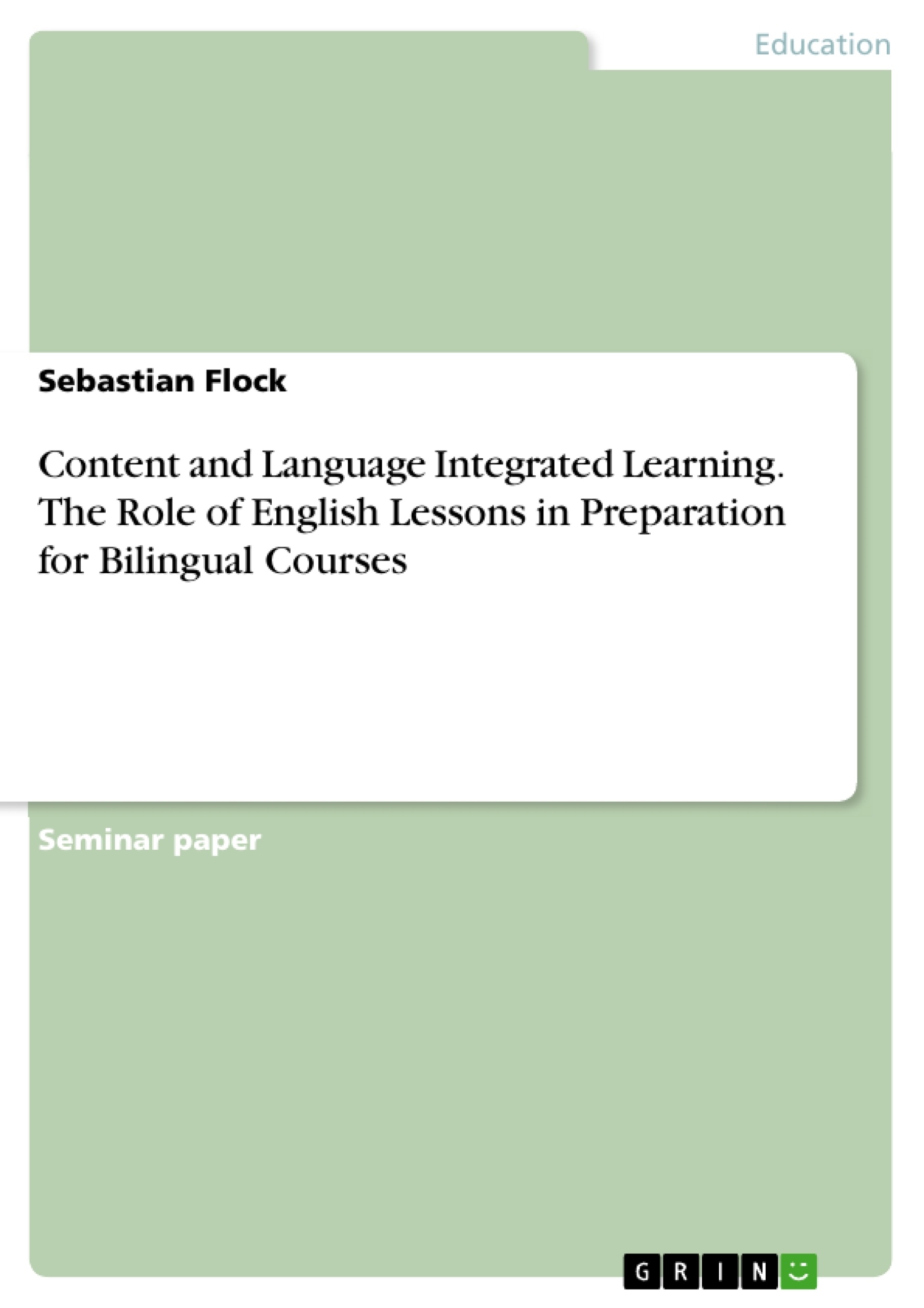Bilingual education in Germany has existed for more than 40 years: it is a product of the Élysée Treaty from 1963. Its aim was to stop the ‘hereditary enmity’, that had determined the relations between France and Germany for many years, through the increased teaching in French, especially in history classes. Nowadays, things have changed. At the conceptual level the German term ‘bilingualer Unterricht’ is more and more replaced by the European term ‘CLIL’, which stands for Content and Language Integrated Learning. At the level of content as well, changes have taken place. It is no longer the political idea of international friendship that dominates bilingual approaches.
The aim of CLIL is to convey cognitive-conceptual, discursive and methodical competences. That means the ability to understand and describe subject specific issues in the target language and to reflect and use subject specific procedures and problem solving strategies. This involved that not only French but also other languages like English or Spanish can be used as a communication medium and that is exactly what a foreign language in CLIL classes is supposed to be: a bare medium. It is not about learning English, it is about learning in English.
The foreign language is not in the foreground but it is used to talk about subject specific topics in an appropriate way. Hence, principles, aims and contents of the CLIL lesson are defined by the subject and not by the foreign language. The same counts for the didactic. Study und working techniques in CLIL classes are those of the subject and not of English lessons. This means that CLIL teachers must not try to solve grammar or language problems during the CLIL course. However, it is obvious that not allbn learners meet the requirements to talk about subject specific matters in their second language. This requests a high language register that learners in grade seven normally have not accomplished yet.
In consideration of the fact that such language problems are not to be solved in CLIL classes, the question arises how general English teachers can prepare their students for future CLIL classes in their English lessons appropriately. To answer this question it is necessary to analyse firstly the reasons for the linguistic problems in CLIL and the obstacles that hinder the students to participate in bilingual lessons. After that it is possible to provide approaches to solving these problems in form of CLIL preparation courses.
Inhaltsverzeichnis (Table of Contents)
- Introduction
- The Linguistic Challenge of CLIL
- The Preparation of CLIL in English Classes
- The Theoretical Base of Scaffolding
- Arrangement of Preparation Courses
- The Content-Related Arrangement of a Preparation Course
- The Temporal Arrangement of a Preparation Course
- Conclusion
- References
Zielsetzung und Themenschwerpunkte (Objectives and Key Themes)
The paper investigates the role of English lessons in preparing students for bilingual courses, particularly focusing on the challenges of Content and Language Integrated Learning (CLIL) in German schools.
- The linguistic challenges of CLIL and the gap between social language skills (BICS) and cognitive academic language proficiency (CALP).
- The need for preparation courses in English lessons to bridge the linguistic gap and equip students with the necessary language tools.
- The concept of scaffolding as a theoretical framework for designing CLIL preparation courses.
- The various approaches to arranging and implementing CLIL preparation courses in German schools.
- The importance of preparing students for future subject-specific discourse and cognitive tasks in the target language.
Zusammenfassung der Kapitel (Chapter Summaries)
The introduction sets the context for the study by outlining the history of bilingual education in Germany and the shift towards CLIL. It highlights the increasing importance of developing cognitive-conceptual, discursive, and methodical competencies in the target language, emphasizing that English becomes a bare medium for learning content rather than the primary focus. The challenges of CLIL are presented in the second chapter, focusing on the differences between the aims of communication in early foreign language acquisition and those required in subject-specific contexts. The paper emphasizes the need for bridging the gap between social language skills and cognitive academic language proficiency, exploring strategies like simplification, code-switching, and closed tasks that may be helpful but ultimately limit cognitive performance. The third chapter delves into the role of English lessons in preparing students for future CLIL courses, highlighting the importance of scaffolding and exploring different approaches to arranging and implementing CLIL preparation courses in German schools.
Schlüsselwörter (Keywords)
The primary focus of this work is on the challenges and opportunities of Content and Language Integrated Learning (CLIL) in German schools, particularly the preparation of students for bilingual courses. The paper emphasizes the linguistic gap between Basic Interpersonal Communication Skills (BICS) and Cognitive Academic Language Proficiency (CALP), the importance of scaffolding in CLIL preparation, and the role of general English lessons in equipping students with the necessary language tools for successful participation in bilingual classes. The paper explores different approaches to arranging and implementing CLIL preparation courses, considering both content-related and temporal aspects.
- Citation du texte
- Sebastian Flock (Auteur), 2014, Content and Language Integrated Learning. The Role of English Lessons in Preparation for Bilingual Courses, Munich, GRIN Verlag, https://www.grin.com/document/346867



